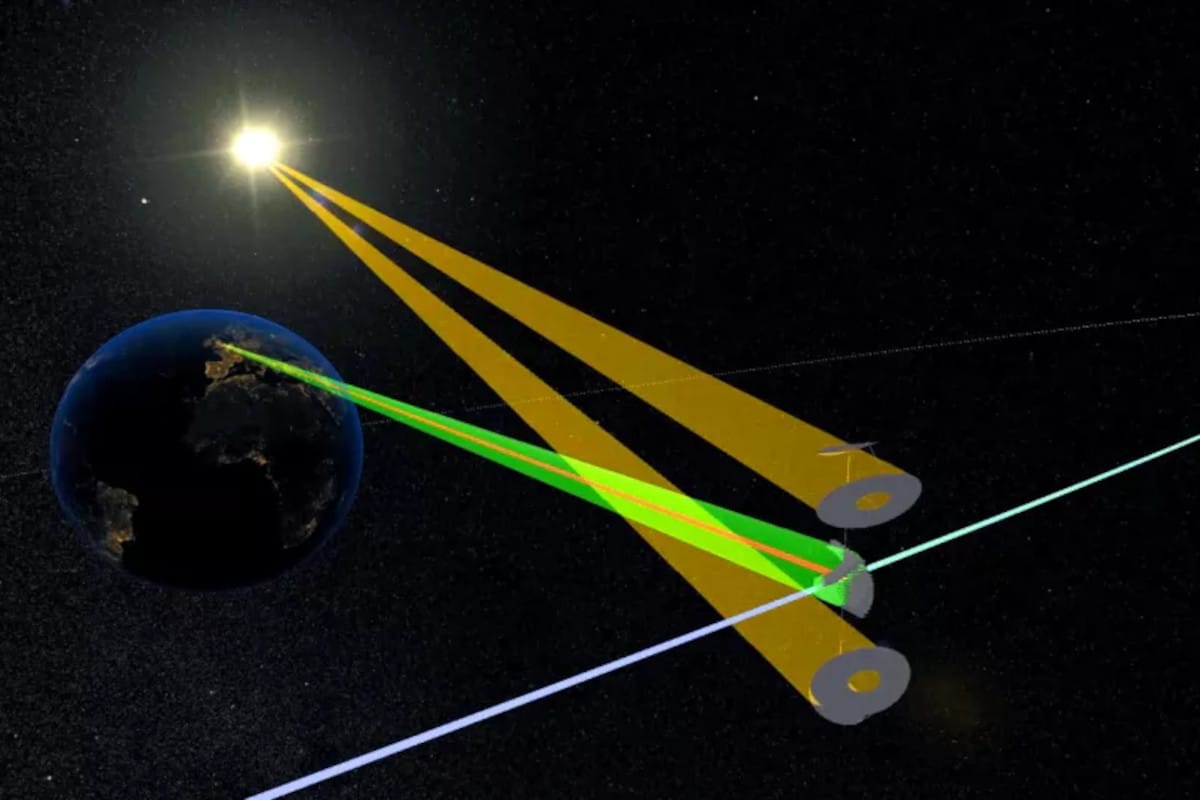
A British organization, which includes Airbus and the University of Cambridge, plans to take solar energy from space seriously in the coming years.
Okay, strictly speaking, of course, all solar energy comes from space. The difference is that the British do not want to collect this energy here on the earth’s surface, but with mirrors and solar cells that are themselves in space. The collected energy is then sent to Earth in the form of radio waves.
These plans have been rumored for some time, but recently Martin Soltau discussed them at a conference. Soltau is chairman of the Space Energy Initiativewhich includes aerospace company Airbus, the British University of Cambridge and satellite manufacturer SSTL be part of.
Kilometers big
A solar panel in space has the advantage that it can collect thirteen times as much energy as the same solar panel on earth. Moreover, you can place it in such a way that it has the sun continuously in view. As a result, it continuously supplies energy, instead of just during the day, when the sun is shining.
The first solar power plant in space has yet to become relatively modest. Relative, because the whole would still be a whole kilometre, reports the astronomy and space site Space.com, 36,000 kilometers from the Earth’s surface. It will therefore require about three hundred launches, if you start from the Starship of SpaceX.
Field full of antennas
The sunlight is captured by mirrors. They then concentrate it on solar cells, which turn it into electricity. That current is converted into microwaves, which go to Earth.

To absorb those microwaves here, a large construction is also needed. Soltau spoke of an area of 7 by 13 kilometers, filled with antennas. “That’s a lot, but the whole thing would still only take up 40 percent of the space that a regular solar park with the same yield would need.”
Terminate responsibly
Last year, consultancy firm Frazer-Nash – for which Soltau works – was commissioned by the British government a study of the idea† It concluded that it is “technically feasible” and “offers new options to de-risk the path to net zero greenhouse gas emissions”.
At the recent conference, aerospace engineer Andrew Ross Wilson from the University of Strathclyde in Glasgow, Scotland. He did, however, note that plans should also be made to dismantle such a space solar park in a responsible manner.
According to Wilson, the microwave radiation that the solar park sends to Earth does not pose a problem. “You will probably receive more radiation from the phone in your pocket than if you stand under one of the beams of microwave radiation,” Space.com quotes him as saying.
few million
Whether in about thirteen years’ time a structure tens of thousands of kilometers from the earth’s surface will really be collecting energy? That remains to be seen. The idea is part of the British government’s plans. A few million pounds are also available for the first steps. But for the complete space solar park with all the trimmings, you will of course have to dig much deeper into the pouch.
Source material:
†A solar power plant in space? The UK wants to build one by 2035” – Space.com
†Space-based solar power: de-risking the pathway to net zero” – GOV.UK
Image at the top of this article: UK Space Energy Initiative